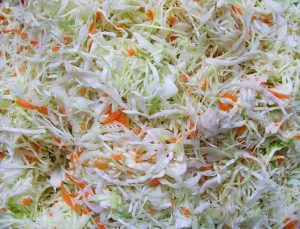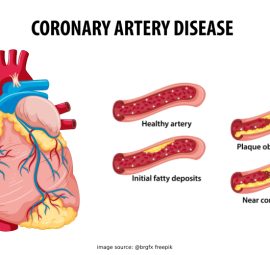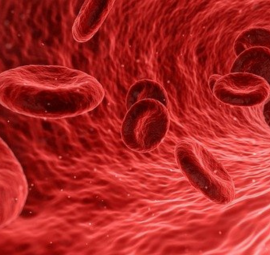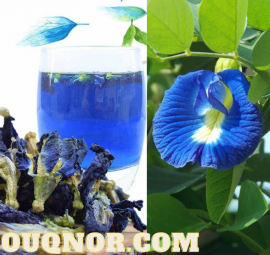Last Updated on October 11, 2025 by Noria ALHUSAM
Historical overview of depression
Depression is among the most prevalent mental disorders, affecting more than 300 million people worldwide across all age groups (World Health Organization, 2023).
It is the leading cause of disability globally and a major contributor to the overall burden of disease.
Women are more likely to experience depression than men, and it differs substantially from transient mood fluctuations.
Depression can become a severe condition, especially when it is prolonged, as it may lead to suicide.
Statistics indicate that approximately 800,000 people die each year due to suicide associated with depression (WHO, 2023).
Definition of Depression
Depression is a serious medical illness that negatively affects emotions and cognition, characterized by persistent feelings of sadness and hopelessness.
It may impact several aspects of daily functioning, including:
-
Appetite and sleep
-
Physical energy
-
Interpersonal relationships
-
The ability to study or work
Types of Depression
There are several types of depression that differ in severity, causes, and symptoms; however, four types are considered the most common:
1. Major Depression (Unipolar)
This type is among the most prevalent forms of depression and is characterized by a profound and persistent low mood.
Major depression is diagnosed when a person experiences five or more symptoms from the following list, provided that at least one of the first two core symptoms is met:
Core Symptoms:
-
Persistent feelings of depression and sadness.
-
Loss of interest or pleasure in nearly all daily activities.
Associated Symptoms:
-
Change in appetite and weight (increase or decrease).
-
Insomnia or excessive sleeping.
-
Persistent fatigue or lack of energy.
-
Deep feelings of hopelessness, worthlessness, or excessive guilt.
-
Impaired concentration, difficulty making decisions, or memory problems.
-
Psychomotor agitation or retardation (e.g., restlessness or slowed movements and thinking).
-
Recurrent thoughts of death or suicide.
-
Observable changes in physical movement (e.g., leg shaking when not previously present).
2. Persistent Depressive Disorder (Dysthymia)
(Formerly known as dysthymic depression or “minor depression”)
This type refers to a continuous depressed mood lasting at least two years, though it typically does not reach the intensity of major depression.
Although the individual may continue to perform daily tasks, they live in a state of chronic discouragement or unhappiness.
Key Symptoms:
-
Persistent feelings of sadness or discouragement most of the time.
-
Changes in appetite (increase or decrease).
-
Sleep disturbances (insomnia or hypersomnia).
-
Reduced energy or fatigue.
-
Low self-esteem or feelings of worthlessness.
-
Persistent sense of hopelessness.
3. Bipolar Disorder
(Previously called manic-depressive illness)
In this type, individuals experience episodes of major depression alternating with periods of unusually elevated energy and activity (mania or hypomania).
Depressive Episodes:
They include the same symptoms as major depression: sadness, loss of interest, sleep and appetite disturbances, fatigue, suicidal thoughts, and cognitive impairment.
Manic (or Hypomanic) Episodes:
These are marked by a range of elevated mood symptoms, such as:
-
Abnormally high energy and reduced need for sleep.
-
Irritability or emotional agitation.
-
Racing thoughts, rapid speech, and increased activity.
-
Inflated self-esteem or grandiosity.
-
Risk-taking or self-destructive behaviors (e.g., excessive spending or sexual risk).
-
In severe cases, hallucinations or delusions may occur, causing a temporary break from reality.
Though the elevated mood might initially feel positive, it is often followed by a deep depressive phase.
Bipolar disorder is recognized as one of the top causes of disability worldwide. NCBI+2National Institute of Mental Health+2
Recent neurotechnology research using wearable devices attempts to distinguish between unipolar and bipolar depression via physiological and behavioral biomarkers, achieving high accuracy (e.g., 96.77 %) in preliminary studies. Wearable‑Derived Behavioral and Physiological Biomarkers for Classifying Unipolar and Bipolar Depression Severity
4. Female-Specific Types of Depression
Although women may suffer from any of the types above, there are two types specifically linked to hormonal changes in women:
a. Peripartum (Perinatal) Depression
Occurs during pregnancy or within the first year after childbirth, affecting about one in seven women. NCBI+1
It can have devastating effects on the mother, the child, and the family if left untreated.
A meta-analysis has found that women giving birth in winter have a somewhat greater risk of postpartum depression compared to other seasons (RR = 0.83 for spring/summer/autumn births). PMC
Moreover, research in 2024 revealed underdiagnosis and disparities in treatment, with only about 11.8 % of postpartum women reporting depressive symptoms at 2–6 months receiving diagnoses. Mailman School of Public Health
b. Premenstrual Dysphoric Disorder (PMDD)
Symptoms typically begin after ovulation and end with the onset of menstruation.
They include:
-
Severe mood swings
-
Irritability and tension
-
Emotional hypersensitivity
-
Difficulty concentrating and insomnia
Recent research indicates a bidirectional link between premenstrual mood disorders and perinatal depression: women with PMDD may have a higher risk of depression during pregnancy or postpartum. Karolinska Institutet News+3BioMed Central+3womensmentalhealth.org+3
One study found that women with PMDs before conception had significantly increased odds of perinatal depression, supporting the idea of early screening for PMDD in prenatal care. BioMed Central
Also, the condition Premenstrual Dysphoric Disorder reportedly affects five times as many individuals as postpartum depression yet receives far less research funding (NIH). Liebert Publications
Causes of Depression
Depression is not merely a transient state of sadness; rather, it is a multifactorial disorder involving complex interactions among genetic, emotional, cognitive, neuroendocrine, hormonal, immune, and nutritional factors. The following section presents an organized explanation of the principal causes, along with recent scientific updates:
1. Chronic Stress as a Root Cause
Persistent stress is considered a primary underlying factor predisposing individuals to depression.
When a person continually focuses on problems perceived as unsolvable, emotional and cognitive burdens accumulate in the subconscious mind, amplifying depressive states.
Neuroimaging studies show increased activity in the left ventrolateral prefrontal cortex (VLPFC), a region involved in problem-focused attention. This overactivation can suppress adaptive distractions and perpetuate negative mood patterns.
If unresolved stress persists, the subconscious may trigger depressive symptoms as a biological signal to redirect attention toward unaddressed issues.
2. The Hormonal System and the HPA Axis
The hypothalamic–pituitary–adrenal (HPA) axis forms a key feedback loop linking the hypothalamus, pituitary gland, and adrenal glands.
Chronic activation of this axis results in sustained cortisol secretion, leading to physiological exhaustion.
Prolonged exposure to high cortisol levels has been shown to damage the hippocampus, a brain region crucial for memory and emotional regulation, resulting in neuronal atrophy and reduced neuroplasticity.
Recent studies in Frontiers in Neuroscience confirm that chronic stress can cause dendritic retraction and structural abnormalities in the hippocampus, thereby promoting depressive symptoms.
Additionally, dysregulation of cortisol feedback mechanisms contributes to HPA axis disturbances frequently observed in individuals with major depressive disorder (MDPI).
Overactivation of the sympathetic nervous system (“fight or flight”) and underactivation of the parasympathetic system may perpetuate hyperarousal, anxiety, and eventually depression.
3. Genetic, Nutritional, and Metabolic Factors
Genetic studies reveal shared mechanisms between depression and obesity, including disruptions in neurotransmitter systems, neuropeptides, inflammatory mediators, and enzyme receptors.
Neuronal suppression and atrophy are considered key neuropathological processes in depression.
Furthermore, several psychological and cognitive symptoms may arise, at least in part, from deficiencies in essential nutrients necessary for optimal brain metabolism and neurotransmission.
4. Hormonal Changes
Fluctuations in hormonal levels—due to pregnancy, postpartum changes, thyroid disorders, or menopause—can precipitate depressive episodes.
In premenstrual dysphoric disorder (PMDD), altered communication between the brain, ovaries, and uterus, including elevated prolactin activity, is believed to contribute to mood instability and emotional dysregulation.
5. The Gut–Brain Axis
The connection between gut health and depression was proposed as early as the 20th century, but recent research has strongly reinforced this hypothesis.
The gut microbiota plays a crucial role in maintaining mental health. Certain beneficial bacterial strains preserve intestinal barrier integrity and prevent the translocation of toxins into the bloodstream, whereas gut dysbiosis can trigger systemic inflammation, contributing to depressive pathophysiology.
Systematic reviews report that patients with depression often exhibit increased pro-inflammatory bacterial species and reduced levels of short-chain fatty acid (SCFA)-producing bacteria, which normally exert anti-inflammatory effects (PMC).
Moreover, the gut microbiome influences HPA axis regulation and neuroimmune signaling (PMC).
Recent reviews in Frontiers in Psychiatry and ScienceDirect identify gut–brain axis dysregulation as a central pathophysiological mechanism in depression.
6. Reduced Cerebral Blood Flow
Decreased cerebral perfusion in specific brain regions correlates with negative mood states, anxiety, and depression, potentially by impairing neuronal oxygenation and metabolic efficiency.
7. Sleep Disturbances
Chronic insomnia frequently precedes depressive episodes.
Persistent sleep deprivation impairs daytime mood regulation and diminishes engagement in protective activities such as exercise, social interaction, and hobbies, all of which buffer against depression.
8. Immunity, Inflammation, and Oxidative Stress
Individuals with depression often display heightened systemic inflammation, suggesting immune system hyperactivation.
Chronic inflammation and oxidative stress can alter neurophysiological function and neurotransmitter balance.
Elevated levels of interleukin-6 (IL-6)—a proinflammatory cytokine—have been documented in patients with major depression, influencing serotonin and dopamine regulation and promoting neuroinflammation (PMC).
Recent findings highlight the potential of immune and microbiome modulation as promising therapeutic strategies for depression (ScienceDirect).
9. Modern Lifestyle Factors
Unbalanced or low-fat diets, excessive screen exposure, and sedentary behavior have been linked to higher rates of depression, particularly among adolescents and young adults.
Additionally, the integration of artificial intelligence (AI) with electroencephalography (EEG) for depression detection is an emerging research direction.
A 2025 systematic review on arXiv discussed the application of AI algorithms to EEG data for diagnosing and monitoring depression, reflecting ongoing advances in neuropsychiatric analytics.
Treatment of Depression
1. Stress Reduction
To alleviate depression resulting from pressure and problems, one must respond to the mind’s signals rather than ignore them: acknowledge emotions and identify the real cause (often stress).
We then develop practical solutions for the problems, followed by acceptance of what cannot be changed and moving forward.
The goal may not be to solve all problems, but to find hope or an initial step forward, which is extremely important.
Helpful techniques include:
-
Neuro-Emotional Technique (NET): Helps identify and remove neurological imbalances related to stress.
-
Psych-K
-
Emotional Freedom Technique (EFT)
-
Somatic Experiencing
-
Body Talk
These methods contribute to healing the subconscious, reducing stress, and improving mental health.
Recent studies on EFT have shown positive effects in reducing depressive symptoms (PMC).
Additionally, changing one’s perspective on life and focusing on the brighter side is very important.
A simple activity, such as bird watching or interacting with nature, helps reduce anxiety and stress and increases happiness because it directs attention away from negative thoughts.
2. Maintaining Gut Health and Stimulating Serotonin Production
Approximately 90% of serotonin is synthesized in the gut and transmitted to the brain via the gut–brain axis.
An amino acid called tryptophan is the precursor for serotonin synthesis, making its presence essential.
To maintain gut health, beneficial bacteria, and serotonin production, it is recommended to include:
-
Fiber (complex carbohydrates): from fruits, vegetables, and whole grains.
-
Probiotics: such as yogurt (especially Bulgarian type), kimchi (a Korean fermented dish), sauerkraut (fermented cabbage), kefir, cheese, and pickles containing Lactobacillus.
Other microbial species play roles in producing neurotransmitters such as dopamine and acetylcholine.
One study showed that these bacteria act on the same neural pathways targeted by certain antidepressant drugs.
A recent 2025 study (Nature) suggests that adjusting gut bacterial balance could be a promising therapeutic approach to depression, indicating that gut microbiota directly affect mood and drug efficacy.
Additionally, a study titled “The correlation between gut microbiota and both…” found that gut dysbiosis influences tryptophan metabolism and serotonin availability in depressive disorders (PMC).
Other recent research found that increasing serotonin release in the intestinal lining can reduce depression-related behaviors in mice, supporting the idea that the gut can serve as a safe therapeutic target (Columbia Irving Medical Center +2 New York University +2)
Also read: What is kefir? Types, health benefits, method of preparation
3. Essential Nutrients for Mental Health
B Vitamins
B vitamins — particularly B1, B3, B6, and B12 — are water-soluble and easily transported to tissues.
They enhance serotonin production.
Sources include nutritional yeast, meat, fish, eggs, leafy greens, beans, and peas.
You can learn more about natural vitamin B12 sources and the symptoms of deficiency.
Vitamin D
Activates genes responsible for releasing neurotransmitters, including serotonin.
It can be obtained from milk, cheese, mushrooms, eggs, and daily sun exposure.
Sunlight is the best source of vitamin D3.
Folic Acid (Folate)
Plays a major role in preventing depression by inhibiting the body’s excessive production of homocysteine, which, in high levels, negatively affects mood.
It is found in asparagus, legumes, leafy greens, broccoli, eggs, citrus fruits, wheat germ, beets, Brussels sprouts, nuts, and beef liver.
Omega Fatty Acids
Found in fish and cod liver oil, rich in DHA and EPA, which possess antidepressant properties.
Bioflavonoids
Several studies have found that bioflavonoid compounds beneficial in treating depression are present in fruits, vegetables, and other foods such as dark chocolate.
Choline
Important for brain function and contains components that help improve mood. Found in eggs.
Curcumin
A potent antioxidant with numerous properties that enhance cognition, improve mood, and assist in treating depression.
4. Fasting
Fasting helps increase brain-derived neurotrophic factor (BDNF), which promotes the growth of new brain cells.
It also enhances dopamine, which improves well-being and is linked to happiness; its deficiency causes sadness.
Fasting may also increase endorphins, hormones that induce euphoria and relieve pain.
Moreover, fasting elevates CREP-TF, a compound that activates specific genes to boost serotonin levels.
In patients with major depression, CREP-TF levels are found to be reduced, while fasting raises them.
A recent 2025 study (PubMed) indicates that intermittent fasting reduces anxiety and depression by modifying brain functional connectivity, thereby enhancing neural plasticity.
5. Caloric Restriction
Caloric restriction is important due to its effects on the neuroendocrine system and mood regulation.
Reducing calories without malnutrition has beneficial effects at both the systemic and cellular levels.
Caloric restriction increases longevity, memory, and quality of life and reduces risk factors for neurodegenerative and psychiatric diseases, including depression.
It also improves cerebral blood flow.
Neurovascular improvements are associated with reduced mammalian target of rapamycin (mTOR) expression, similar to the antidepressant effects of ketamine.
Both short-term and long-term calorie restriction activate the HPA axis, increasing glucocorticoid levels and alleviating depressive symptoms hormonally.
A recent 2025 study (PMC) shows that caloric restriction improves symptoms of depression and anxiety by modulating mood-related neural pathways.
6. Herbal Remedies
Hibiscus Tea
A natural source that helps combat depression-related signs such as fatigue, hopelessness, and loss of enthusiasm.
Evening Primrose Oil
Used to treat premenstrual dysphoric disorder (PMDD), as it contains gamma-linolenic acid, which helps reduce prolactin levels and thereby regulates estrogen.
Additionally, it is recommended to take vitamin D3 and increase calcium intake.
Rhodiola Rosea
This herb contains about 140 active compounds, with rosavin and salidroside being the most potent.
Its roots help treat anxiety, fatigue, depression, anemia, and headaches.
Note: It is advisable to consult a healthcare professional before adopting any of these treatments.
Risks of Pharmacological Treatments
Psychotropic medications carry warnings and side effects that may be serious. Moreover, they do not address the root cause of the psychological issue; rather, they often act by merely alleviating symptoms.
The effects of these drugs also do not appear immediately — they require a period of continuous use, and over time, their effectiveness may gradually diminish.
Selective Serotonin Reuptake Inhibitors (SSRIs)
The most commonly prescribed antidepressants are the Selective Serotonin Reuptake Inhibitors (SSRIs).
These drugs work by inhibiting the reuptake of serotonin in synaptic clefts, which temporarily increases its concentration and thereby improves mood.
Common examples include:
Fluoxetine (Prozac), Sertraline (Zoloft), Paroxetine (Paxil), Fluvoxamine (Luvox), Citalopram (Celexa), and Escitalopram (Lexapro).
Their use has expanded to include treatment for depression, anxiety, obsessive-compulsive disorder (OCD), eating disorders, and various other psychiatric conditions.
Side Effects of SSRI Antidepressants
Some patients using these medications experience insomnia, skin rash, headache, joint or muscle pain, and gastrointestinal disturbances such as nausea or diarrhea.
In most cases, these symptoms are mild and temporary.
1. Reduced Blood Clotting Ability
A potential issue with blood clotting may occur due to decreased serotonin concentration in platelets, increasing the risk of minor internal bleeding — especially when the medication is combined with aspirin or non-steroidal anti-inflammatory drugs (NSAIDs) such as ibuprofen or naproxen.
A 2024 study published in JAMA Network Open confirmed that combining SSRIs with anti-inflammatory drugs increases the risk of gastrointestinal bleeding.
A recent 2025 meta-analysis also found that patients on SSRIs had a modest but statistically significant increase in risk of bleeding in mucosal tissues when co-administered with NSAIDs, particularly among older adults (meta-analysis, Clinical Pharmacology & Therapeutics, 2025).
2. Sexual Dysfunction
Some patients may experience reduced sexual desire, delayed ejaculation, or difficulty achieving arousal.
Recent reports (2024, The Guardian) indicate that some symptoms may persist even after discontinuing the medication — a condition known as Post-SSRI Sexual Dysfunction (PSSD).
A 2023 longitudinal cohort study in Psychoneuroendocrinology tracked patients for 12 months after SSRI discontinuation and found that a significant subgroup (approximately 15-20%) continued to report sexual side effects, supporting persistence of PSSD in some cases.
3. Drug Interactions
Most medications are metabolized in the liver via Cytochrome P450 enzymes.
Since SSRIs are metabolized through the same system, using them concurrently with other medications may increase or decrease drug concentrations in the bloodstream, requiring dose adjustments or discontinuation of one of the drugs.
A 2023 study (Frontiers in Pharmacology) noted that this interaction is among the key causes of variability in antidepressant efficacy.
A 2024 randomized pharmacokinetic study demonstrated that co-administration of SSRIs and certain proton-pump inhibitors significantly altered blood levels of both, supporting the need for monitoring and adjustment (British Journal of Clinical Pharmacology, 2024).
4. Serotonin Syndrome
When SSRIs are taken together with other drugs or herbal products that enhance serotonin activity, Serotonin Syndrome may occur — a rare but potentially life-threatening condition if not treated promptly.
A 2024 review (StatPearls) reported that this syndrome typically manifests within the first few days of drug interaction. (Source: NCBI)
Recent case reports in 2025 describe onset of serotonin syndrome in patients combining SSRIs and certain herbal supplements (e.g., St. John’s Wort), reinforcing warnings about such combinations (Journal of Clinical Psychopharmacology, 2025).
5. High Dosage Risks
Taking large doses of antidepressants is dangerous, as it may
lead to seizures or cardiac rhythm disturbances.
A 2024 dose-escalation study in Epilepsy & Behavior reported increased seizure risk in patients with predisposing conditions when SSRIs were given above maximal recommended doses.
6. Risks in Younger Age Groups
Medical reports indicate that individuals under 18 years of age may develop suicidal thoughts during the first weeks of treatment or when the dosage is changed.
Therefore, all antidepressants carry a “Black Box Warning”, as required by the U.S. Food and Drug Administration (FDA) since 2004, and this warning remains in effect under the 2025 updates.
A 2023 longitudinal study found that adolescents initiating SSRI therapy had a small but measurable increase in suicidal ideation in the first four weeks compared to placebo, underscoring the importance of close monitoring (Journal of the American Academy of Child & Adolescent Psychiatry, 2023).
Dr. Berg
Candice Burt, Ph.D.
Dr. Georgia Eddy
https://pubmed.ncbi.nlm.nih.gov/27288567/
https//www.healthline.com/health/depression/melancholic-depression
https://www.health.harvard.edu/mind-and-mood/six-common-depression-types
https://www.mayoclinic.org/diseases-conditions/atypical-depression/symptoms-causes/syc-20369747
https://www.medicalnewstoday.com/articles/248320#_noHeaderPrefixedContent
https://www.addictioncenter.com/stimulants/antidepressants/
https://ndnr.com/mindbody/subconscious-healing-two-case-studies-highlight-the-mind-body-connection/
https://ezinearticles.com/?Understanding-Depression-and-the-Subconscious-Mind&id=9965429

 Turkish
Turkish العربية
العربية
















An informative and well-written piece. The principles are easily understood and applied thanks to your thorough explanations and practical examples. Thank you for taking the time to provide such detailed information. Your time and knowledge are much appreciated.
Thanks for fantastic information I was looking for this info for my mission.
Not many people would want to appreciate you for this awesome piece, but you are great.
This article provided me with exactly the information I needed.
Your blog post is a testament to the power of storytelling. You had me hooked from the very first sentence!
I found this post incredibly informative—much appreciated.
I appreciate how you make complicated things simple.
Your blog post was the highlight of my day. Thank you for brightening my inbox with your thoughtful insights.
I appreciate how you simplified a complex subject.
Your passion for this subject really shines through in your writing. It’s inspiring to see someone so enthusiastic about what they do.
Your blog is a constant source of inspiration for me. Your passion for your subject matter is palpable, and it’s clear that you pour your heart and soul into every post. Keep up the incredible work!
Simply desire to say your article is as surprising The clearness in your post is simply excellent and i could assume you are an expert on this subject Fine with your permission let me to grab your feed to keep up to date with forthcoming post Thanks a million and please carry on the gratifying work
This article is a fantastic read—thank you for sharing!